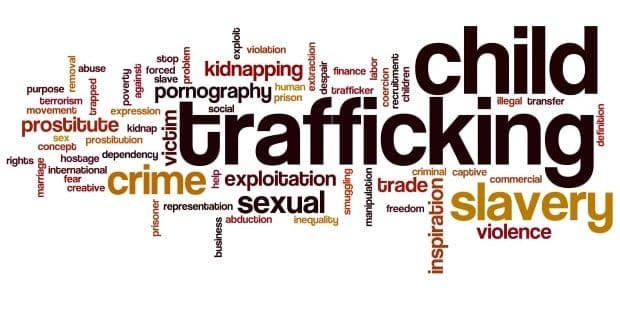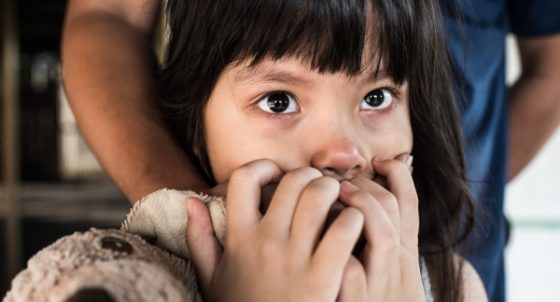Important Facts About Child Trafficking
Child trafficking is a complex problem affecting many countries. It’s the practice of illegally removing children from the protective safety of their homes for the purposes of sexual exploitation, involuntary labor or slavery.
It involves the entire process of finding and removing children from their homes, then transporting and taking them to their final destination.
According to the International Labor Organization (ILO), trafficking is a form of slavery and should be stopped yesterday. Child trafficking forces children into several dangerous situations.
For instance, children work in unsafe and horrible circumstances including prostitution, child soldiers, drug mules, slavery, domestic labor and organ donors.
Where does it Happen?
Unfortunately, many countries are involved in child trafficking either as the victim’s original country, somewhere the child traveled through, or their final destination. According to the 2014 global report on trafficking from the UN office of drugs and crime, children make up 62% of the people trafficked in Africa and the Middle East.
The second-largest area is South Asia, East Asia, and The Pacific, with 36%. America also comes in third place with 31%, and Europe and Central Asia have 18%.
Statistics of Child Trafficking
India, China, Thailand, Pakistan, and Bangladesh are among the top ten countries with the highest number of trafficking in the world. Indian also ranks top with over 14 million victims, 12 million being children. China comes second with 3.2 million victims.
About 5.5 million children are trafficked around the world. The numbers indicate Latin America and the Caribbean have the highest occurrence.
However, it is more prevalent in developing countries. In 2017, there was a 13% increase from the previous year in the number of children trafficked into the U.S. These children also move from state to state for domestic purposes.
Statistic of Child Trafficking in the U.S
According to the U.S Department for Health and Human Services, nearly 300,000 children are at risk of sexual exploitation every year in the U.S. Also, with nearly 1.3 million homeless youths living on the streets of America, more than 300,000 children could be at risk of being trafficked yearly.
The state of California has the highest rate of human trafficking with approximately 1656 people trafficked daily. Similarly, Michigan and Georgia each have the second and third highest reported cases with 383 and 375 respectively.
Types of Child Trafficking
1. Forced child labor
2. Prostitution or sex exploitation
3. Child soldiers
4. Debt bondage
5. Forced migrant laborers
6. Child organ donors
The most common forms of child trafficking include sex trafficking, forced labor, and also debt bondage. However, according to the U.S Department of State, involuntary servitude is the biggest sector of child trafficking in the world.
Causes of Child Trafficking
Underprivileged children are the easiest targets for child traffickers. As a result, traffickers leverage the victim’s vulnerability to establish dependency. Here are some of the causes of child trafficking.
1. Poverty
This remains the leading cause of child trafficking. Low-income families sometimes abandon their children, consequently leaving them vulnerable to traffickers.
In some developing countries, many parents also sell their children to afford the necessities of life. Also, due to poverty, many children and orphans roam the streets.
As a result, they become easy prey for traffickers who promise them better-living conditions in another country.
2. Humanitarian Crises
Traffickers take advantage of natural disasters to strike unsuspecting victims. During these crises, separation can take place between a child and the family. Without any parental protection, children become easy targets for traffickers.
One instance was the situation in Haiti after the earthquake in 2010. Many children were kidnapped and trafficked to other parts of the world.
3. Lack of Education
Similarly, Illiteracy and inaccessibility to proper education put many children at risk.
4. Absence of Birth Registration
Statistics suggest that 40 million births each year are not registered. Consequently, these children easily move away from their families without the possibility of tracing their disappearance.
5. Unenforced Legislation
In many countries, there are no legal consequences for child traffickers. Traffickers also use this as leverage to get away with their illicit activities.
6. High Demand for Organs
To escape harsh living conditions, many underprivileged children get desperate for money. As a result, some children sell one of their kidneys for money. Organ sale represents up to 10% of kidney transplants performed each year.
7. Cheap Labor
The demand for cheap labor in poor and unsanitary conditions is another cause.
Factors of Child Trafficking
Child trafficking can happen anywhere. However, some common elements include:
1. Family dysfunction
2. Isolation and loneliness
3. Learning disabilities and also mental health problems
4. Lack of employment opportunities
5. Demand for cheap labor
6. Lack of social support
Who are the Victims of Child Trafficking?
- Firstly, child trafficking involves children of different backgrounds, ages, and ethnicity around the world. They may be trafficked in their country, brought in legally, or smuggled to other countries.
- Underprivileged, homeless, or runaway children are at a higher risk of being exploited or trafficked. In addition, internationally smuggled children are often lured with the promise of better living conditions overseas.
- Children whose parents do not understand the full consequences of sending their children overseas with relatives can also be victims of child trafficking.
- Children who are vulnerable to kidnappers and pimps are at a higher risk of being trafficked.
How do Child Traffickers get their Victims?
The most common method used by traffickers is to lure and exploit the victim’s vulnerability. However, other known methods also include threats, lies, violence, and coercion.
Furthermore, many victims are also lured with false promises of a better life. In some instances, traffickers physically force, manipulate, and lie to their victims.
Do you have a story on child trafficking? Please, share them in the comments below.







